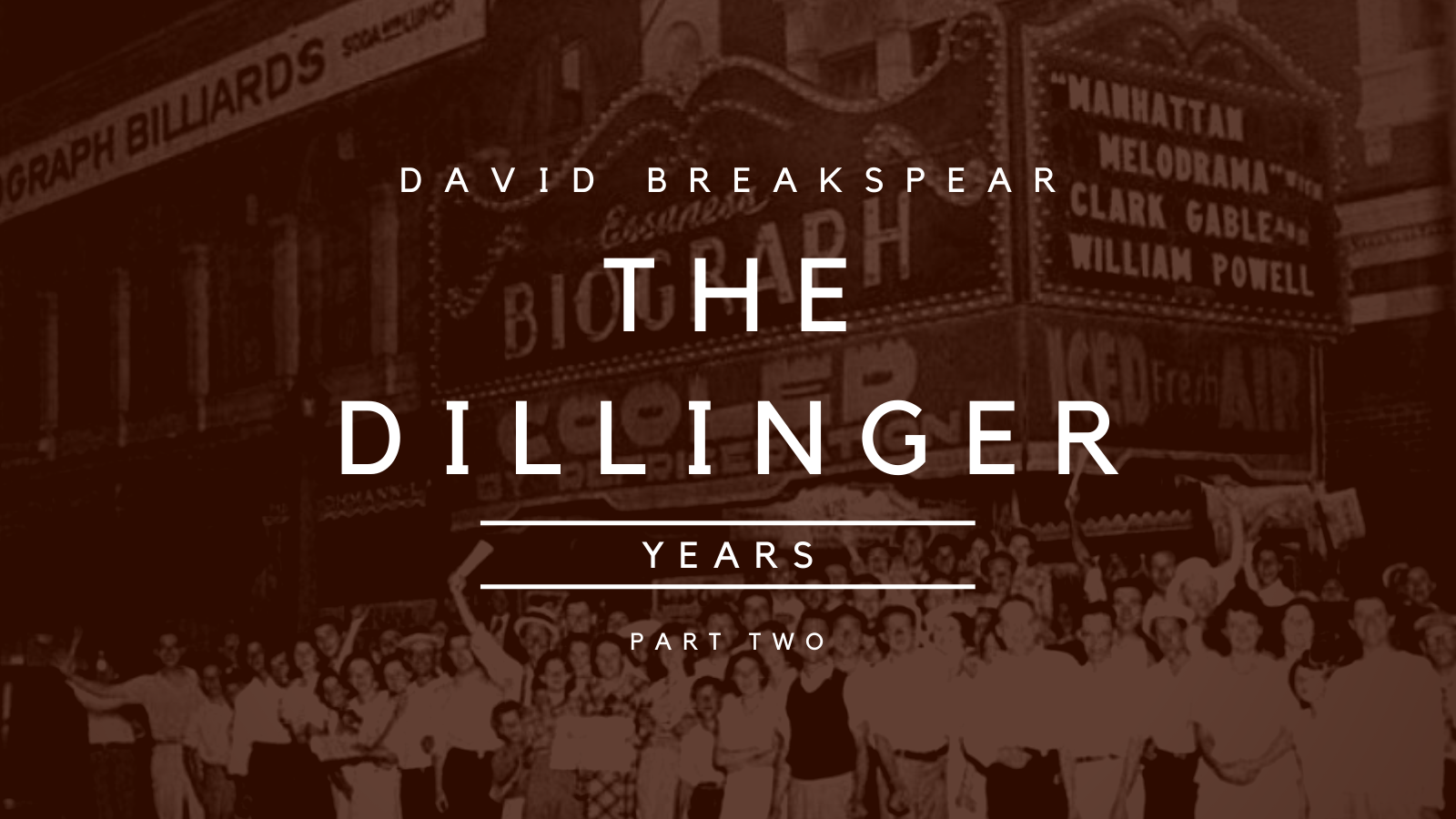During his teenage years, John Dillinger, born June 22, 1903, in Oak Hill, Indianapolis, was regularly in trouble with the police for thieving and fighting. So much so that in 1921, the family moved to rural Mooresville, Indiana, hoping this would calm John down. However, the plan did not work. In 1922, they arrested John for auto-theft. Then in 1923, he gave a false name as two police officers who wanted to question him about a pistol, he was carrying grabbed him, but he slipped out of the overcoat one officer had grabbed and ran. To get out of town quick, he went to the Federal Building and signed up for the Navy.
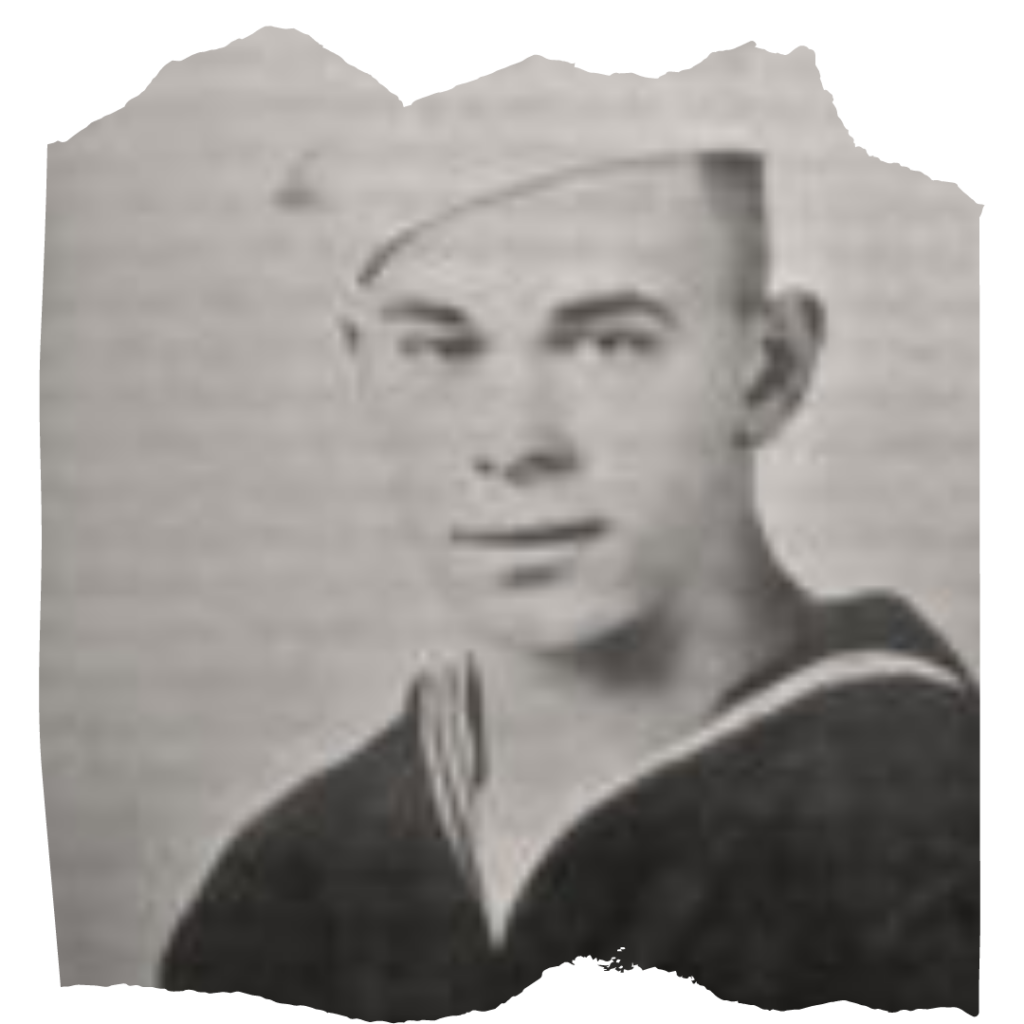
The Navy was used to taking in wayward youth and knew time was often of the essence in getting kids out of town. They accommodated him by shipping him to Great Lakes Training Station a mere four days later, July 24, 1923.
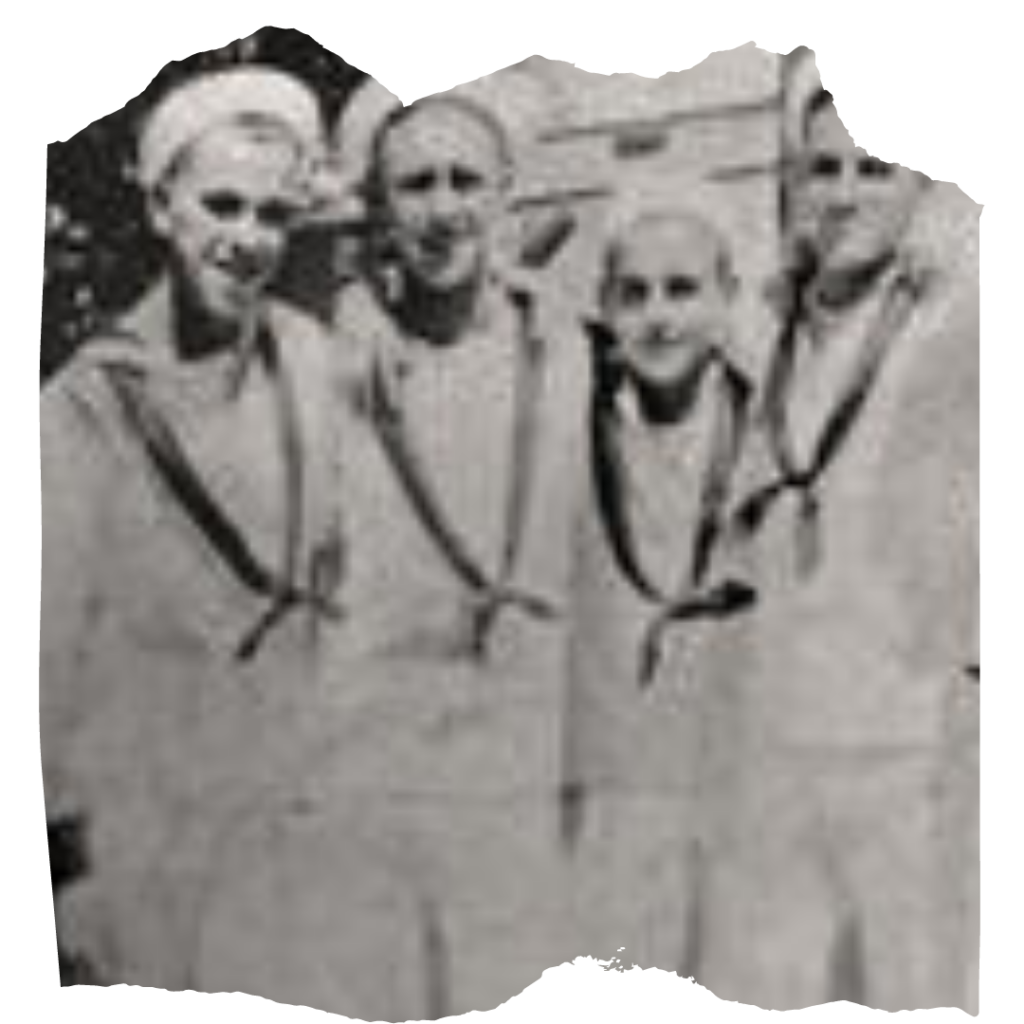
Dillinger completed basic training in Oct. 4, 1923, and was assigned to the battleship USS Utah as a firefighter, third class, where he spent most of his time shoveling coal into the ship’s huge boilers. After 22 days of hot, backbreaking labor, he had enough; he jumped ship in Boston and went AWOL for a day to cool off. Upon his return, a deck court martial stamped on Nov. 7, 1923, was added to his growing rap sheet along with an $18 fine, — nearly a month’s pay–and a ten-day “bread and water” stint in the brig.
A delay in carrying out the sentence gave him the opportunity to get into even more trouble. On Nov. 9, instead of lying low, he left his duty post “without authority” and “in disobedience of orders.” They tacked five days of solitary confinement onto this previous sentence. This made him more rebellious. Weeks after his release, he was in hot water again, failing to return from a 24-hour leave as scheduled on Dec. 3.
The Navy, noting that he “left with no effects — intentions not known,” waited two weeks, then listed him as a deserter. They also slapped the first ever bounty on his head, fifty dollars. John Dillinger ended up getting a Dishonorable Discharge from the Navy in early 1924. *
Upon his return to Mooresville, John met 16-year-old Beryl Ethel Hovious and on April 12, 1924, the pair were married. Struggling to find work, Dillinger teamed up with his pal and ex-con, Ed Singleton to rob a grocery store in Mooresville where they got away with $50. The two men were spotted by a local priest who knew the pair and reported them. They were apprehended the following day and at the subsequent court hearing, Singleton, who had pleaded not guilty, was convicted after a trial and received two to fourteen years in prison. Dillinger’s father, after speaking to the prosecutor, convinced his son to plead guilty. On September 6, 1924, three months after his 21st birthday, they sent John Dillinger to a reformatory in Pendleton, Indiana for a prison term of ten to twenty years.
It was at Pendleton where Dillinger met his future mentor, Harry Pierpont.
Following a later and unsuccessful prison escape, Pierpont and Van Meter were transferred to Indiana State Prison in Michigan City. After spending five years at Pendleton, Dillinger requested a transfer to Michigan, which went through, and he rejoined his mentor, Pierpont.
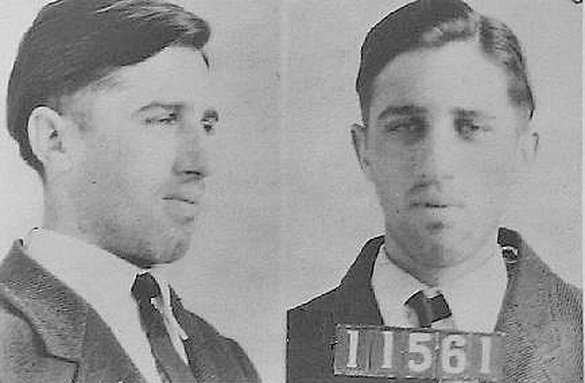
By mid-1932 Dillinger had become part of a gang in prison, which included Van Meter along with Charles Makley, John Hamilton, and Russell Clark. Pierpont led the gang, whose principal goal was to escape. After spending over eight years in prison, Dillinger received his parole. As he was the first to be getting out, it was Dillinger’s duty to get the funds together to fulfill the gang’s goal of escaping from prison. Pierpont, and the gang’s members, prior to his release on May 10, 1933, had provided Dillinger with a list of banks to rob and in no time at all after his release he got to work.
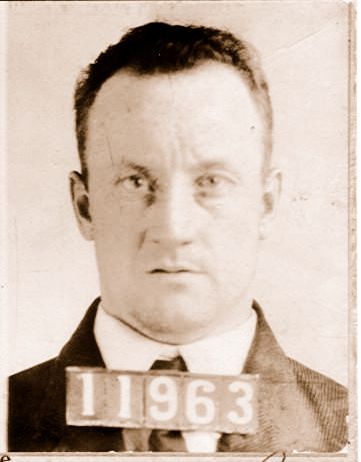
On June 21, 1933, he robbed $10,000 from the New Carlisle National Bank in New Carlisle, Ohio. Then, on August 14, Dillinger robbed a bank in Bluffton, Ohio. The Ohio police were already on his tail and on September 22 he was arrested and taken into custody. In searching Dillinger police found a document which was a blueprint for a prison break. He refused to tell them what the document was for. However, all was not lost for the prison gang led by Pierpont. Before he was apprehended, Dillinger had guns smuggled into the prison laundry where a few of the gang worked. Only four days later and executed using the exact details as in the plans the police had caught Dillinger with. Eight men escaped from the Indiana State Prison. During the escape, they shot two guards. The gang became known thereafter as The First Dillinger Gang.
It was then Dillinger’s turn to get out, but not by legal means. On October 12, 1933, four members of the gang broke Dillinger of jail in an incident that saw the shooting and death, as covered in part one, of Sheriff Jess Sarber. They had warned the Sheriff someone would try to break Dillinger out; the warning was not heeded, instead the Sheriff derisible dismissed it. Although not a federal matter, the police called the FBI in for help in identifying and locating the criminals. The four men involved in the breakout of Dillinger were identified and named as Harry Pierpont, Russell Clark, Charles Makley, and Harry Copeland.
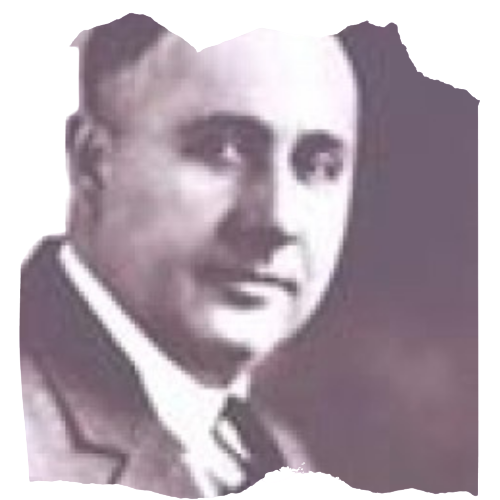
Dillinger and his gang robbed several banks. They also stole machine guns, rifles, plus handguns along with ammunition and bulletproof vests from two police weapons stores, one in Auburn and the other in Peru, Indiana. On December 14, one of the gang, John Hamilton, shot and killed a police detective in Chicago. A month later, a police officer was shot and killed during a robbery at the First National Bank of East Chicago, Indiana.
Then in Tucson, Arizona, on January 23, 1934, a fire broke out in a hotel where two of the Clark and Makley were hiding under fake names. A firefighter attending the hotel fire recognized the two men from their wanted photographs. Local police arrested Clark and Makley, and Dillinger and Harry Pierpont. The police also seized some guns stolen from the two storage units in Indiana, including five bulletproof vests, and more than $25,000 in cash.
Whilst being held at the county jail in Crown Point, Indiana, which authorities had boasted was “escape proof.” Dillinger fashioned a gun out of a piece of wood and on March 3, 1934, Dillinger threatened two prison guards with the fake gun and forced them to open his cell door. He then grabbed two machine guns, locked up the guards and escaped.
A telegram sent by Melvin Purvis, who was the Chicago Special Agent in Charge, to FBI Director Hoover on Dillinger’s escape from the Crown Point jail can be viewed from the links below.
Dillinger then made a huge mistake that would eventually cost him his life. He stole a car belonging to the local sheriff and drove it across the Indiana-Illinois state line. It is Federal offense to transport a stolen motor vehicle across a state line. Dillinger was now wanted for a federal crime, and the FBI became active in the search for him.
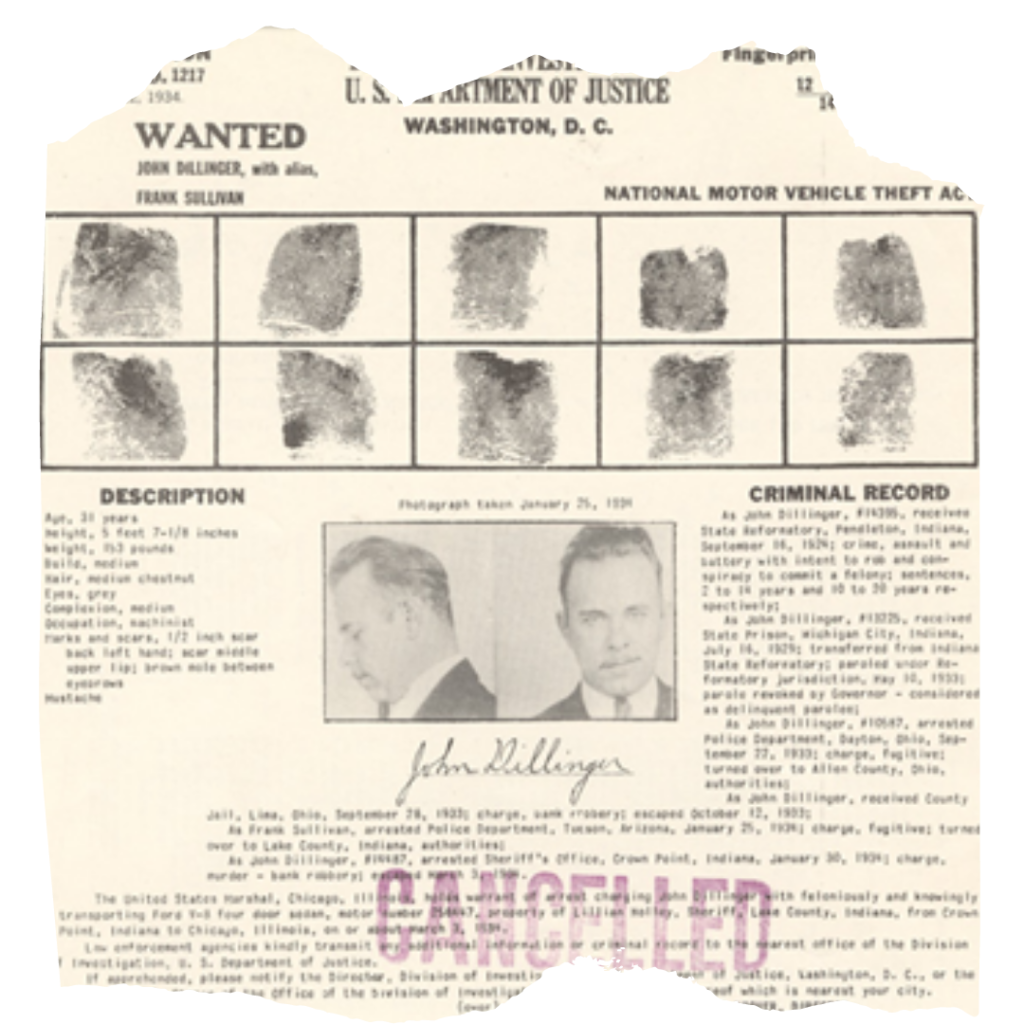
As discussed in Part One, Pierpont, Makley, and Clark were returned to Ohio and convicted of the murder of the sheriff.
In Chicago, Dillinger joined up with, among others, Homer Van Meter, Lester Gillis aka Baby Face Nelson, Eddie Green, and Tommy Carroll. Dillinger with his new gang continued to rob banks.
On March 30, 1934, a manager of the Lincoln Court Apartments in St. Paul reported two tenants after they were acting nervous and refusing to allow the caretaker into their apartment to carry out maintenance work. The FBI spoke to the manager and then set up surveillance of the suspicious tenants known as Mr. and Mrs. Hellman. Then the following day, two law enforcement officials knocked on the Hellman’s door. Dillinger’s girlfriend, Evelyn Frechette, opened the door, but slammed it shut when she saw who was knocking.
The Agent called for backup, and they surrounded the building.
One of the gang’s members, Homer Van Meter, then showed up at the apartment and when challenged by agents there was a brief gunfight before Van Meter hijacked a truck, forcing the driver to drive off. The door to the apartment opened and a burst of machine gunfire sprayed bullets into the hallway. Dillinger and Evelyn escaped out the back. Van Meter, and Dillinger with Evelyn in toe, all made their way to a hideout belonging to Eddie Green. Upon searching the Lincoln Court address, agents found more of the equipment which had been previously stolen from the police stores.
On April 3, 1933, Eddie Green was seen. He had been living with a woman, Bessie Skinner, under the assumed names of Mr. and Mrs. Stephens. When Green spotted the FBI, a gunfight ensued. Green was shot but not fatally, however, he died in hospital from his injuries eight days after the shooting.
Dillinger took Evelyn back to Mooresville. They stayed with Dillinger’s father until the wound he received at Lincoln Court had healed. While Dillinger was recuperating, Evelyn went to visit a friend in Chicago and the FBI arrested her. She was later convicted of harboring a fugitive and sentenced to two years in prison. Green’s girlfriend Bessie Skinner received 15 months. Dillinger and Van Meter then robbed more guns and bulletproof vests, this time from a police station in Warsaw, Indiana.
Later that month, April 1933, the FBI received information there had been several suspicious guests booking in the summer resort of Little Bohemia Lodge. One, they believed could be Dillinger and another the FBI thought could be Baby Face Nelson.
Several FBI agents from Rhinelander, Wisconsin, then made their way to the resort. About two miles away from Little Bohemia, they switched off their car headlights and travelled the rest of the way under the cover of darkness. However, as they got close to the resort, they could hear dogs barking and then from the roof came a volley of machinegun fire.
As an agent telephoned for backup, the operator interrupted the call to say there was some trouble at a cottage two miles down the road. When agents arrived, they saw a car in which Baby Face Nelson had taken three people as hostages. As Nelson ordered the agents out of their car, he opened fire, killing Special Agent W. Carter Baum. Nelson’s bullets severely wound another FBI agent and a police constable. Nelson then took the agent’s car and fled the scene.
Back at the lodge, things had gone quiet. The next morning when agents entered the building, they only found three scared women. Dillinger and five others had escaped out the back before the FBI had surrounded them.
FBI Director J. Edgar Hoover assigned Special Agent Samuel A. Cowley to head the FBI’s investigative efforts into finding Dillinger. Cowley, and Melvin Purvis, Special Agent in Charge of the Chicago office, set up headquarters in Chicago. A squad of Agents worked with local police in following up any lead they received.
Then, on July 21, 1934, the madam of a brothel Anna Sage, whose actual name was Ana Cumpanas, in Gary, Indiana, contacted the police with information. The Immigration and Naturalization Service considered Anna, who arrived in America from Romania in 1914, an undesirable alien, because of her profession, and deportation proceedings were under way. Anna, along with hoping for a cash reward, asked the FBI to help have the deportation proceedings ceased.
This woman called herself, however, her, and she had entered the United States from her native Rumania in 1914. Because of her profession, she was considered an undesirable alien by the FBI, and they had started deportation proceedings. Anna was willing to sell the FBI some information about Dillinger for a cash reward, plus the FBI’s help in preventing her deportation. After a meeting with agents Cowley and Purvis where they promised a cash reward for Dillinger’s capture and a promise to make it known to the Dept. of Labor, who handled deportation matters, about Anna’s cooperation she agreed to tell them the information she had. A friend of hers, Polly Hamilton had been meeting with Dillinger and the two, with Anna tagging along, were planning to go to the movies together the following night (July 22) either at the Marbro Theater or the Biograph. Anna also agreed to let the agents know as soon as she knew what theater they would attend, and so the agents present could identify her, Anna would wear an orange dress.
On Sunday, July 22, Anna called as promised, however she was still unaware which theater of the two suggested that they were going to. FBI agents and local police covered both theaters. Then at half-past eight that evening, the threesome was spotted entering the Biograph theater. Manhattan Melodrama staring Clark Gable and William Powell was showing.
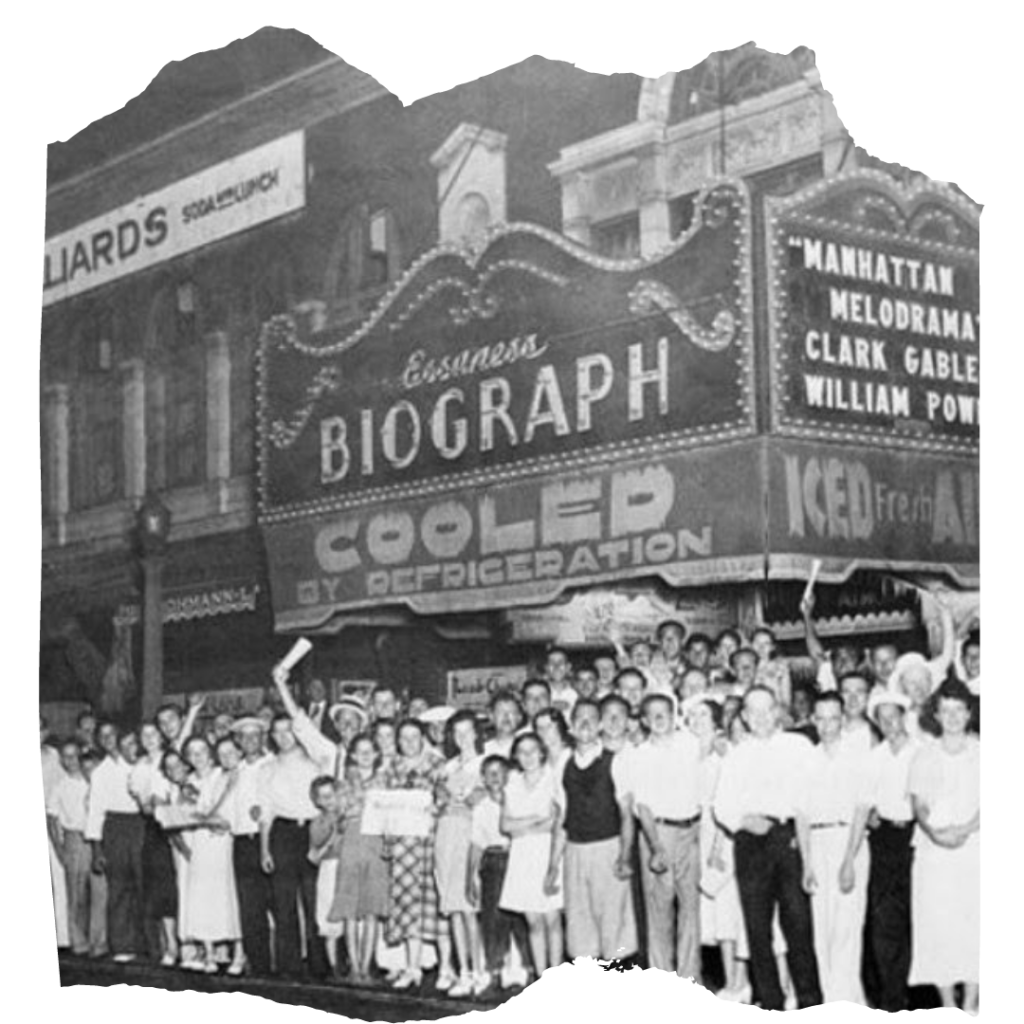
After speaking on the phone with J. Edgar Hoover, agent Cowley instructed his men to wait and not to endanger themselves, but if Dillinger started shooting, it was every man for himself.
At 10:30 p.m., as Dillinger left the theater with Anna on one side and Polly the other, they walked past a doorway in which Agent Purvis was lurking. Purvis then performed a pre-arranged signal for his men to move in on Dillinger. He lit a cigar. Dillinger quickly realizing what was grabbed a pistol from his right trouser pocket as he ran toward an alleyway.
Three shots fired by FBI agents hit Dillinger.
He fell face down on the pavement.
On July 22, 1934, exactly a month after his 31st birthday, at 10:50 p.m. John Herbert Dillinger was pronounced dead.
In a BBC news report from October 2019**, they stated:
“A request to exhume the remains of infamous US gangster John Dillinger has been approved by officials in Indiana.
Dillinger’s relatives have been pressing for the permit, saying an imposter is buried at Crown Hill Cemetery in Indianapolis.
The FBI says its agents shot dead the gangster in Chicago in 1934, and he was then buried in Indiana’s state capital.
The disinterment is now planned for 31 December 2019 – but the cemetery is fighting the decision in court.
Dillinger’s nephew Michael Thompson and another family member say they believe that the FBI “killed the wrong man” at Chicago’s Biograph Theater in 1934.
They say they have evidence that the imposter in the grave has different eye colour and fingerprints.
The FBI has dismissed such arguments as “a conspiracy theory”.
In a tweet in August, the FBI said it had:
#DYK some think a stand-in was killed at the Biograph Theater instead of Dillinger.
If it sounds like a conspiracy theory, that’s because it is. A wealth of information supports Dillinger’s demise, including 3 sets of fingerprints, all positively matched.
— FBI Chicago (@FBIChicago) August 1, 2019
References/sources
http://www.fbi.gov/fbihistory.htm
**https://www.bbc.co.uk/news/world-us-canada-49946501
- Ciro Dapagio’s MobKing: Trailer & Review - July 24, 2023
- LUCKY: A True Crime Graphic Novel - April 25, 2023
- The Theft of The Marlborough Diamond – Chapter 2 - February 14, 2023





